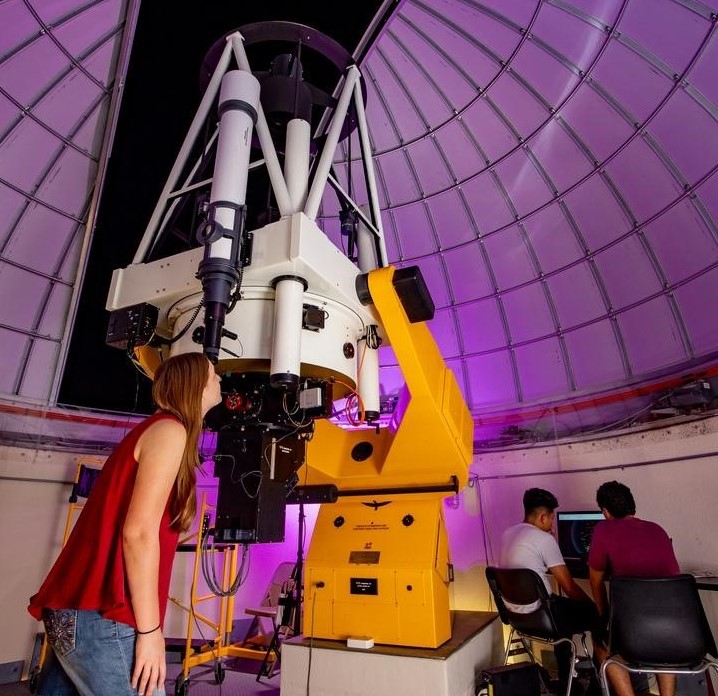Document Type
Article
Publication Title
Astronomy and Astrophysics
Abstract
We present the AGILE-GRID (Astro-rivelatore Gamma a Immagini LEggero – Gamma-Ray Imaging Detector) monitoring of Cygnus X-3, during the period between November 2007 and July 2009. We report here the whole AGILE-GRID monitoring of Cygnus X-3 in the AGILE “pointing” mode data-taking, to confirm that the γ-ray activity coincides with the same repetitive pattern of multiwavelength emission and analyze in depth the overall γ-ray spectrum by assuming both leptonic and hadronic scenarios. Seven intense γ-ray events were detected in this period, with a typical event lasting one or two days. These durations are longer than the likely cooling times of the γ-ray emitting particles, implying we see continuous acceleration rather than the result of an impulsive event such as the ejection of a single plasmoid that then cools as it propagates outwards. Cross-correlating the AGILE-GRID light curve with both X-ray and radio monitoring data, we find that the main events of γ-ray activity were detected while the system was in soft spectral X-ray states (RXTE/ASM (Rossi X-ray Timing Explorer/All-Sky Monitor) count rate in the 3−5 keV band 3 counts s−1), that coincide with local and often sharp minima of the hard X-ray flux (Swift/BAT (Burst Alert Telescope) count rate 0.02 counts cm−2 s−1), a few days before intense radio outbursts. This repetitive temporal coincidence between the γ-ray transient emission and spectral state changes of the source turns out to be the spectral signature of γ-ray activity from this microquasar. These γ-ray events may thus reflect a sharp transition in the structure of the accretion disk and its corona, which leads to a rebirth of the microquasar jet and subsequent enhanced activity in the radio band. The γ-ray differential spectrum of Cygnus X-3 (100 MeV–3 GeV), which was obtained by averaging the data collected by the AGILE-GRID during the γ-ray events, is consistent with a power law of photon index α = 2.0 ± 0.2. Finally, we examine leptonic and hadronic emission models for the γ-ray events and find that both scenarios are valid. In the leptonic model – based on inverse Compton scatterings of mildly relativistic electrons on soft photons from both the Wolf-Rayet companion star and the accretion disk – the emitting particles may also contribute to the overall hard X-ray spectrum, possibly explaining the hard non-thermal power-law tail seen during special soft X-ray states in Cygnus X-3.
DOI
10.1051/0004-6361/201219145
Publication Date
2012
Recommended Citation
Piano, Giovanni and Hannikainen, Diana Carina, "The AGILE Monitoring Of Cygnus X-3: Transient Gamma-Ray Emission And Spectral Constraints" (2012). Aerospace, Physics, and Space Science Faculty Publications. 182.
https://repository.fit.edu/apss_faculty/182


